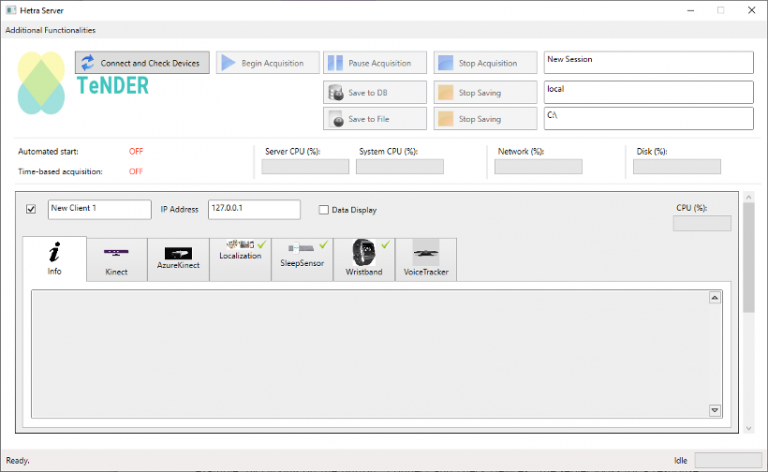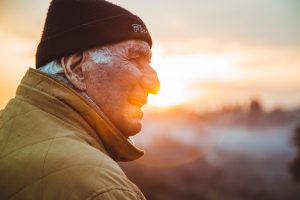
With an increasingly ageing population in Europe, the prevalence of cognitive impairments and heart disease represents a major social and health care issue. 1.2 million people in Europe are affected by Parkinson’s disease (PD), Alzheimer’s disease and other forms of dementia remain one of the biggest global public health challenges of our generation, and the World Health Organization estimates that cardiovascular diseases account for 31% of all global deaths.
TeNDER, currently running under the EU-funded Horizon 2020 programme, has developed and will shortly begin piloting an integrated care system. This system consists of assistive technologies that monitor vital signs, capture movement and gait, and recognise emotional states and changes. TeNDER’s driving motivation is to become a contributing factor in improving patients’ quality of life.
Here, we will focus on the specific ICT-based interventions designed to detect falls. The TeNDER system uses devices equipped with sensors to monitor and support the physical status of older adults.
Fall detection is one of the major challenges in the public healthcare domain, especially for the elderly. For this reason, reliable observation is necessary to mitigate the effects of falls. The technology and products related to fall detection have always been in high demand within the security and the healthcare industries. An effective detection system provides immediate support and helps reduce the medical care costs associated with falls [1, 2].
TeNDER will be capable of linking large amounts of relevant sensed information during the interventions, which can then be mined, analysed, and modelled. These analyses will give healthcare professionals additional information and pertinent feedback on-demand, to help them make more accurate and informed decisions about their patients’ care.
The continuous tracking and the personalised interventions will make the patient feel safer and more autonomous. Within the TeNDER project, all patient information from the various sensors will be collected, integrated, synchronised, and safely stored, while adhering to rigorous data protection procedures.
To achieve this, the Health Tracking (HeTra) tool (previously developed in the ICT4LIFE project [3]) has been extended in TeNDER to control the underlying Internet of Things hardware infrastructure and take over available sensor discovery (see Figure 1), device registration and management, and data collection. It will deliver robust and reliable data processing and an adaptation layer guaranteeing real-time communication and interoperability between the TeNDER cloud and the variety of sensing devices.
The HeTra tool now supports the novel solutions offered by affective computing detection, a feature that will be integrated into the analysis.

HeTra monitors specific health characteristics, from direct situational information (e.g., activity and health markers) to periodical test results and medical observations. Additionally, HeTra incorporates a feedback mechanism extracts valuable conclusions about the health of a patient. During the pilots, the subsystem will help users prioritise which health characteristics to track.
 HeTra uses the Body Tracking SDK from Kinect Azure to track multiple human bodies (see image on the left). This approach not only delivers raw data, it also analyses and extracts features that will be useful for subsequent evaluations.
HeTra uses the Body Tracking SDK from Kinect Azure to track multiple human bodies (see image on the left). This approach not only delivers raw data, it also analyses and extracts features that will be useful for subsequent evaluations.
Regarding fall detection, TeNDER can detect such events based on data acquired by several devices. More specifically, TeNDER acquires the coordinates of the body joints of a patient’s skeleton using (1) depth cameras (such as Kinect Azure), (2) the accelerometer data on the patient’s wrist (via Smart Watches), and/or (3) ambient sounds captured by microphones.
TeNDER then analyses the acquired data and can detect with high accuracy a fall event using deep learning methods [2] trained in large sets of data. Finally, it should also be noted that TeNDER is a modular system. Hence, a subset of the aforementioned devices suffice to detect falls. However, the use of data from more devices tends to increase the accuracy of the method.
By detecting, in real-time, the HeTra subsystem allows researchers to employ data from several types of sensors to alert the caregivers that a patient has fallen. Prompt alerts can help mitigate the effects of falls – which can often lead to a reduced quality of life – and patients and caregivers can feel safer and more independent in different settings.
References:
[1] Mubashir, Muhammad, Ling Shao, and Luke Seed. «A survey on fall detection: Principles and approaches.» Neurocomputing 100 (2013): 144-152.
[2] T. Theodoridis, V. Solachidis, N. Vretos, P. Daras, «Human fall detection from acceleration measurements using a Recurrent Neural Network», International Conference on Biomedical and Health Informatics Thessaloniki, Greece, 18-21 November 2017
[3] ICT4LIFE UPM DSS Repository. Available at: https://gitlab.com/davidGATV/ict4life-decision-support-tool




